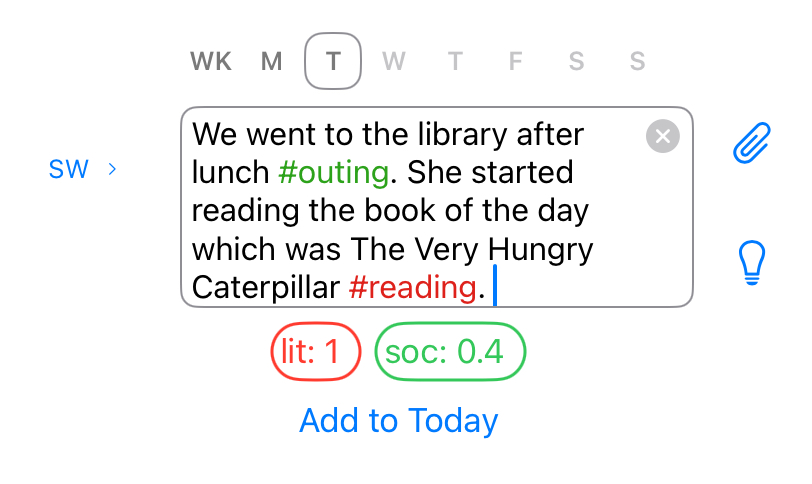Every entry made in the EHEApp must have at least one tag and every tag has a breakdown into Numeracy, Literacy, Social, STEM and Life Skill elements. For a more in depth look at why local authorities have settled on these as their core criteria please see our post Numeracy, Literacy, Socialisation, and Progress

If you look at the entry above, the outing to the library had a social element of 0.4 and reading the book added a literacy element of 1. All that these numbers are showing is the amount of each of the three core criteria your child has done.
This amount is only every an estimate because every #outing has a social element of 0.4. The idea is that going on an outing more often than not leads to some level of interaction with other people, in this case maybe other children in the library or the librarians. Clearly some outings are more social than others so the elements assigned to a tag is only ever an average.
The same is true of the reading element – not all reading is equal but a reading hashtag is always given an element of 1 literacy. Again this is only an average amount of literacy a reading activity will provide.
Sometimes your child will sit down and read for hours and sometimes they’ll get distracted after 5 minutes. The app does not distinguish between the two, they both add a literacy element of 1 and the assumption made is that this will even out over time.
Finally, you may be surprised to see literacy values show up more than you expect.

In this example, a physics hashtag has a numeracy element of 0.5 and a literacy element of 0.4; you may wonder why the literacy is so high. In fact you can’t build an electronics circuit without understanding the language used to explain the circuitry.
The same is true for so many subjects that we don’t traditionally think of having a literacy element – another obvious example is maths – you can’t get very far in maths if you don’t have the necessary language skills. Take the following GCSE question;
Nadia has £5 to buy pencils and rulers. Pencils are 8p each. Rulers are 30p each. She says “I will buy 15 pencils. Then I will buy as many rulers as possible. With my change I will buy more pencils.” How many pencils and how many rulers does she buy?
This question is as much about language skills and understanding sentence structure as it is about numeracy.
In summary, by using tags you can get a much more accurate feel for the true educational value of the activities you do with your child.
